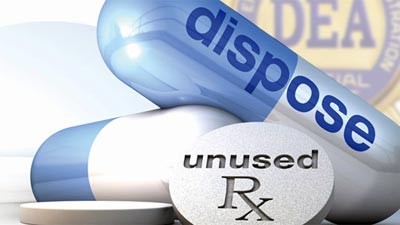Every Conversation Counts

You are the most powerful influence in your child’s life. More than friends. More than TV. More than celebrities. And that’s why it’s important that they hear from you about marijuana and alcohol use.
Talking with your teen about these topics can be hard, but it’s one of the most important things you can do to keep them safe and healthy. Having open conversations will ensure they know your expectations, and also how much you care about them.
Below are some questions that kids and teens might ask about alcohol and marijuana. There is often more than one right answer—so see what works best for you. You can tailor your responses based on your own view and experience.
Additional information on how to talk with your kids about alcohol and marijuana can be found in the Partnership for Drug-Free Kids’ Parent Talk Kit and Marijuana Talk Kit.
Q: Some kids at school drink or use marijuana and they seem fine. What’s the big deal?
Q: What should I do if I’m at a party where people are using marijuana or alcohol?
Q: How can marijuana be harmful to me when it’s used as medicine by others?
Q: If it’s impossible to overdose from marijuana, why can’t I use it?
Q: Did you drink or smoke marijuana when you were my age?
Q: I heard people say they drive better when they are high. Is that possible?
Q: What does the new marijuana law say?
Q: Why is it okay for you to use marijuana or drink alcohol, but not for me?
Q: I heard marijuana is not as bad if it’s just in a brownie…right?
Q: My friends are starting to use marijuana (or drink alcohol), but I don’t want to. What should I tell them? I don’t want to lose my friends.
Q: What is worse, alcohol or marijuana?
Question: Some kids at school drink or use marijuana and they seem fine. What’s the big deal?
Potential Answers:
- The effects of marijuana use at your age are hard to see. Just because someone seems fine doesn’t mean they aren’t being affected. A person’s brain is still developing into their twenties. The science is clear that when teens use marijuana, it can impair short term memory, motivation and the ability to learn.
- The effects of alcohol aren’t always easy to see. After drinking, their grades might suffer or they might have a hard time sleeping at night. While drinking, teens are more likely to make poor decisions and put themselves in unsafe situations like fights, car crashes or overdosing. Kids who begin using alcohol at an early age have more problems with alcohol dependence as adults.
- What your friends are doing isn’t what matters. What matters is that every time a kid uses illegal drugs, it puts them at risk—in lots of ways. Using alcohol or marijuana can affect your schoolwork, get you in trouble with the law, get you kicked off a sports team, make you do unsafe or harmful things, take away your motivation, or make you feel depressed.
Question: What should I do if I’m at a party where people are using marijuana or alcohol?
Potential Answers:
- Any time you are in a situation like that, you can call me and I will come get you. If you don’t want your friends to know I’m coming to get you, let’s come up with a phrase that only we know. Like, “Yes Mom, I did my homework!” If I am not available, you have my permission to call a cab to take you home.
- Any time someone pressures you to use alcohol or marijuana, you will need to stay strong and stay true to yourself and your choices. Let your friends know that you don’t need alcohol or drugs to have fun. If you need to, you can let them know that you face serious punishment at home for using alcohol or drugs.
Question: How can marijuana be harmful to me when it’s used as medicine by others?
Potential Answer:
- All drugs, whether legal or illegal, have side effects. Some of the side effects for marijuana could be harmful to you because your brain and body are still developing. For someone who is very sick with an illness like cancer or epilepsy, a doctor and patient may decide the potential benefits of marijuana outweigh these risks. That doesn’t mean it’s safe for everyone to use.
Question: If it’s impossible to overdose from marijuana, why can’t I use it?
Potential Answers:
- If you mean overdose and die from marijuana, the answer is no, it’s not very likely. However, people can experience severe side effects like anxiety, psychotic reactions or become very ill. People can also injure themselves because marijuana affects judgment, perception and coordination. Marijuana use can be especially harmful when a person drives under the influence of marijuana.
- It is also possible to overdose from synthetic marijuana—and sometimes marijuana is laced with other drugs, especially if not from a licensed retailer. It’s not easy to tell what kind of marijuana it is, especially if you did not buy it yourself. Edible marijuana in particular can be hard to use in safe doses. Using too much can be very dangerous and make you really sick.
- Much like alcohol, one of the biggest risks posed by marijuana is being too impaired to make good decisions. It can change how you think and react, which is why driving after using marijuana is dangerous. That’s true for youth and adults. Marijuana can harm your brain, reduce your motivation, make you hallucinate, affect your ability to learn or remember information, and impair your judgment.
Question: Did you drink or smoke marijuana when you were my age?
Potential Answers:
- [If you did] I did drink and/or smoke marijuana before I should have. The reason I regret it is because it put me in some risky situations and impaired my judgment. And now that I’m a parent, the absolute most important thing to me is that you are safe and healthy. I’m not saying these are experiences you should never have. I just don’t want you to have them while your body is still developing, or when you could get in trouble with the law.
- [If you didn't] I didn’t drink or smoke marijuana. Even though I was curious and there was peer pressure, I knew that using drugs illegally wasn’t the path I wanted to take and that they could interfere with the activities that I enjoyed. I know that you are strong enough to make good choices.
Question: I heard people say they drive better when they are high. Is that possible?
Potential Answer:
- That is not possible. Marijuana can limit the brain’s ability to react to situations quickly and logically which can impair driving ability. That is why the Washington State Patrol is trained to identify drivers who are high, and you can go to jail for driving high.
Question: What does the new marijuana law say?
Potential Answers:
- Washington State’s marijuana law makes it legal for adults over the age of 21 to use marijuana. However, there are limits to how much marijuana an adult can possess.
- It’s still illegal to smoke marijuana in public—just like having an open container of alcohol in public is illegal.
- It’s illegal to drive while high.
- It is a felony for parents to provide marijuana to their children.
- It’s illegal to take marijuana outside the state of Washington.
Question: Why is it okay for you to use marijuana or drink alcohol, but not for me?
Potential Answers:
- The law says marijuana and alcohol are legal for adults over the age of 21. That is because adult brains are more developed and the science shows that it is less harmful for them to use. There is a lot of evidence that shows marijuana use can be harmful to teens—including damaging their memory, motivation and ability to learn.
- At your age, the part of your brain that controls decision making and judgment is not fully developed. So, your ability to make good choices is not as strong as it will be when you are in your mid-twenties.
- Adults have more life experience and generally use alcohol and marijuana in greater moderation and in safer environments. When you are an adult, it will be legal and appropriate for you to make these same choices.
- Using alcohol or marijuana can affect your schoolwork, get you in trouble with the law, get you kicked off a sports team, make you do unsafe or harmful things, take away your motivation, or make you feel depressed.
Question: I heard marijuana is not as bad if it’s just in a brownie…right?
Potential Answer:
- Actually, consuming marijuana-infused food and drinks can pose an even greater risk to your health and safety. That is because the “high” can be delayed, which makes it even harder for the user to know when they have had too much. There have been very serious accidents caused by people eating marijuana-infused foods.
Question: My friends are starting to use marijuana (or drink alcohol), but I don’t want to. What should I tell them? I don’t want to lose my friends.
Potential Answers:
- I’m happy to hear that you don’t want to use marijuana (or drink alcohol). Let’s talk about some of the ways you’d be comfortable responding if you are invited or pressured to use.
- You can tell them how you feel about it. You don’t need to judge them; simply explain that you don’t want to use alcohol or marijuana, and if you hang out together you’d rather do activities that don’t involve marijuana or alcohol. You can also tell them that your parents have told you there will be serious consequences if you use alcohol or marijuana.
Question: What is worse, alcohol or marijuana?
Potential Answers:
- Both drugs are harmful in similar and different ways. Both of them can hurt your brain, your body and your future. Both of them can impair your judgment, and put you in risky situations. And if you take too much, they can both make you very sick. Mixing alcohol and marijuana can also be a dangerous combination—harming your judgment and damaging your body more than just using one alone.
- Honestly, it’s not a question of which one is worse. I want you to avoid anything that can harm you – whether that’s using tobacco, alcohol, marijuana or other drugs.
Make it a two-way conversation by asking your child questions too.
Q: Do you have any questions about alcohol or marijuana?
Q: Are kids at your school using marijuana or alcohol? Are they talking about using it?
Q: Why do you think some people choose to use?
Q: What would you do if your friends asked you to use marijuana or drink with them?
Q: Have you ever been offered marijuana?
Q: If you don’t feel comfortable talking to me, who else could you go to if you have questions about using marijuana or drinking alcohol?
Q: I noticed a lot of teen marijuana use and drinking in the movie we watched last night. What did you think about that? Do you have any questions?
Q: Do you know what would happen to you if you got caught using marijuana or drinking alcohol?
Q: Do you know that marijuana can harm you–both your health and future opportunities?












 and fourth-quarter paired with senior have never sounded more valid as an excuse for almost any behavior. Facebook is littered with positivity and people proclaiming their future homes: colleges, universities, jobs and gap years of adventure.
and fourth-quarter paired with senior have never sounded more valid as an excuse for almost any behavior. Facebook is littered with positivity and people proclaiming their future homes: colleges, universities, jobs and gap years of adventure.